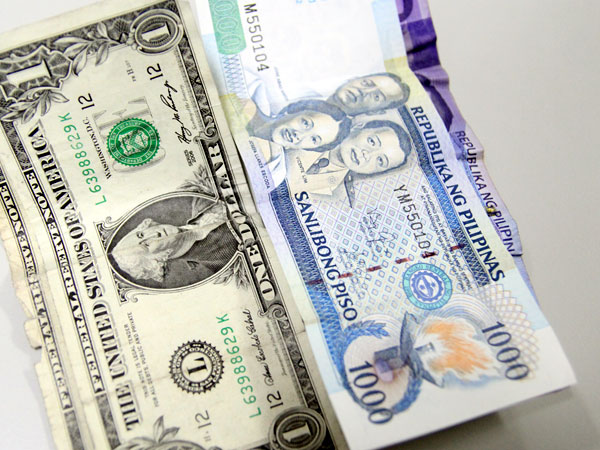DOF: PH’s foreign debts ‘manageable’

INQUIRER.net FILE PHOTO
MANILA, Philippines — Despite record-high debts that piled up amid the prolonged fight against COVID-19, the Philippines has managed to keep foreign borrowings “manageable,” remaining the lowest in Asean-5 when measured as a share of the economy, the Department of Finance (DOF) said on Saturday.
In an economic bulletin, the DOF’s chief economist and retired undersecretary Gil Beltran noted that while the Philippines’ external debt stock rose 8.1 percent to $106.4 billion last year — the first time to breach the $100-billion level, it was equivalent to 27 percent of gross domestic product (GDP), slightly down from 27.2 percent in 2020 when GDP shrank amid the worst post-war recession inflicted by COVID-19.
“At 27 percent of GDP, the country’s external debt is at a manageable level. This ratio is less than a half of the level in 2005, at 57.3 percent,” Beltran said.
The country’s total external debt figure recently released by the Bangko Sentral ng Pilipinas (BSP) showed that over three-fifths of foreign obligations were incurred by the government, while the remainder were owed by the private sector.
“The recent build-up in external debt was driven by the government’s resource mobilization against the COVID-19 pandemic. In 2020, the public sector’s external debt increased by 35.8 percent but that of the private sector’s external debt actually declined by 1.1 percent. In 2021, public sector debt increased by 10 percent, and the private sector by 5.3 percent,” Beltran noted.
The latest Bureau of the Treasury (BTr) data had also shown that of the record P12.76-trillion outstanding debt of the national government as of end-April, only 30 percent or P3.83-trillion worth were foreign borrowings.
The government mostly borrows locally, through the weekly issuance of debt paper such as T-bills and bonds, to take advantage of flushing liquidity in the domestic financial system while minimizing foreign exchange risks.
As such, when compared with its Asean-5 peers, the Philippines’ 2021 external debt-to-GDP ratio was the lowest among the region’s developing economies such as Malaysia’s 69.3 percent, Thailand’s 39 percent, Vietnam’s 38.6 percent, and Indonesia’s 35 percent.
Pre-pandemic, the Philippines’ external debt-to-GDP was an even lower 22.2 percent in 2019. It also kept its position of having the smallest share of foreign obligations to economic output in Asean-5 even at the height of its pandemic-induced recession in 2020.
“The Philippines is in the middle of 5 Asean countries in the ranking of percentage-point (ppt) change in external debt-to-GDP ratio during the pandemic. At 4.8 ppts, the Philippines is higher than Indonesia and Vietnam but lower than Thailand and Malaysia. This implies continued prudence in debt management,” Beltran said.
Last year, the Philippines borrowed a total of $2 billion from three multilateral lenders — the Manila-headquartered Asian Development Bank (ADB), the China-led Asian Infrastructure Investment Bank (AIIB), as well as the Washington-based World Bank — to bankroll its mass vaccination program against COVID-19.
On top of the $1.2 billion secured from these three development banks in March of last year to buy vaccines, the government borrowed another $800 million last December to purchase booster and pediatric shots.
The three lenders directly paid vaccine manufacturers and suppliers for the Department of Health’s (DOH) orders, such that no money passed through the government in order to avoid corruption.
But the DOF’s own estimates had shown that these pandemic-related concessional or low-interest, long-term foreign borrowings have to be repaid until 2060, spanning two generations.
In a forum last week, Ndiamé Diop, the World Bank’s country director for the Philippines, noted that while was “a lot of focus on the debt-to-GDP ratio, and rightly so,” the Philippines was also making progress in reducing the amount of interest, being shelled out from the national budget, which the government pays for outstanding debts.
Diop said that last year, the share of interest payments to the government’s total spending on public goods and services eased to 9.2 percent. “This indicator sheds light on the burden of debt within the budget — the debt payment relative to the other priority expenditures in the budget.”
“The good news is that in the Philippines, prudent fiscal management and prudent debt management over the past decade has brought that ratio from 19.3 percent in 2010, to only 9.2 percent in 2021. And this is one of the lowest numbers in the region,” Diop said.
“The economic managers in this country really have already the experience of bringing these ratios down. And if I remember that number which is the share of interest payment in the budget, if you look at it 20 years ago, it was almost 30 percent. What that means is that the budget had little impact on people in the country and on infrastructure and key priorities because almost one-third of the budget was dedicated to interest payments. So I think this is really a number that gives us confidence,” Diop added.
